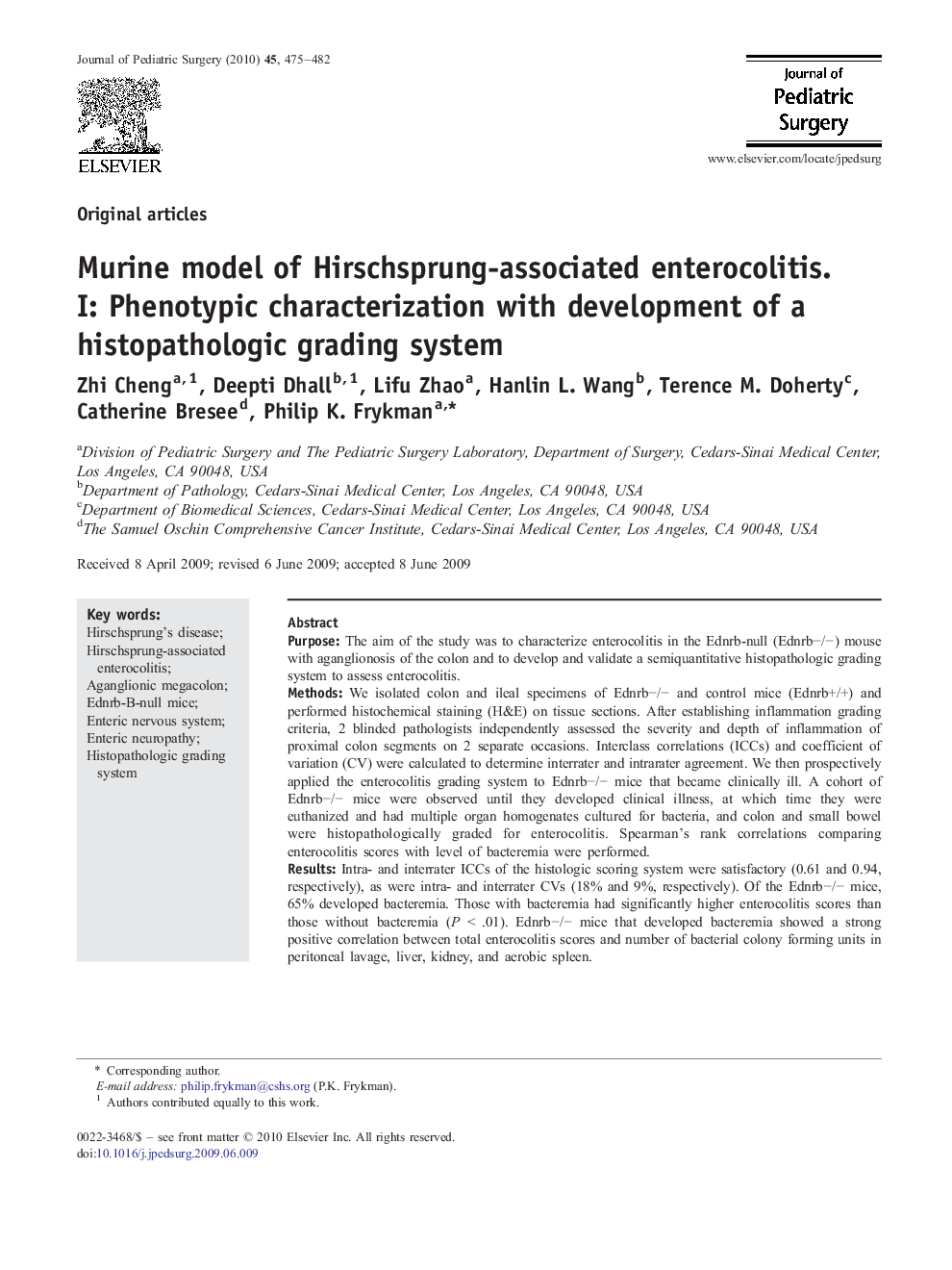| Article ID | Journal | Published Year | Pages | File Type |
|---|---|---|---|---|
| 4157545 | Journal of Pediatric Surgery | 2010 | 8 Pages |
PurposeThe aim of the study was to characterize enterocolitis in the Ednrb-null (Ednrb−/−) mouse with aganglionosis of the colon and to develop and validate a semiquantitative histopathologic grading system to assess enterocolitis.MethodsWe isolated colon and ileal specimens of Ednrb−/− and control mice (Ednrb+/+) and performed histochemical staining (H&E) on tissue sections. After establishing inflammation grading criteria, 2 blinded pathologists independently assessed the severity and depth of inflammation of proximal colon segments on 2 separate occasions. Interclass correlations (ICCs) and coefficient of variation (CV) were calculated to determine interrater and intrarater agreement. We then prospectively applied the enterocolitis grading system to Ednrb−/− mice that became clinically ill. A cohort of Ednrb−/− mice were observed until they developed clinical illness, at which time they were euthanized and had multiple organ homogenates cultured for bacteria, and colon and small bowel were histopathologically graded for enterocolitis. Spearman's rank correlations comparing enterocolitis scores with level of bacteremia were performed.ResultsIntra- and interrater ICCs of the histologic scoring system were satisfactory (0.61 and 0.94, respectively), as were intra- and interrater CVs (18% and 9%, respectively). Of the Ednrb−/− mice, 65% developed bacteremia. Those with bacteremia had significantly higher enterocolitis scores than those without bacteremia (P < .01). Ednrb−/− mice that developed bacteremia showed a strong positive correlation between total enterocolitis scores and number of bacterial colony forming units in peritoneal lavage, liver, kidney, and aerobic spleen.ConclusionsThe Ednrb−/− mouse with aganglionosis develops enterocolitis and has features similar to Hirschsprung-associated enterocolitis in humans. Our grading system is a reliable way to assess enterocolitis. By performing microsurgical pull-through, we can now perform controlled, hypothesis-driven, mechanistic studies to evaluate etiologic factors affecting enterocolitis in the Ednrb−/− mouse.
